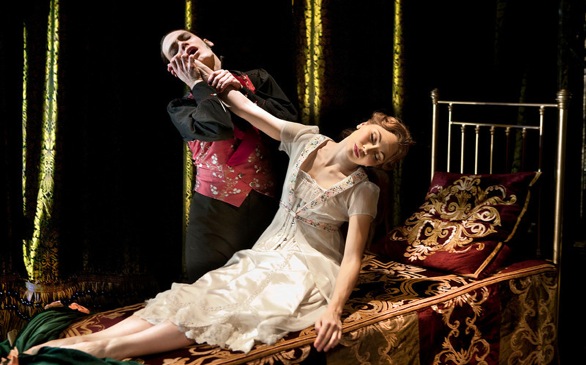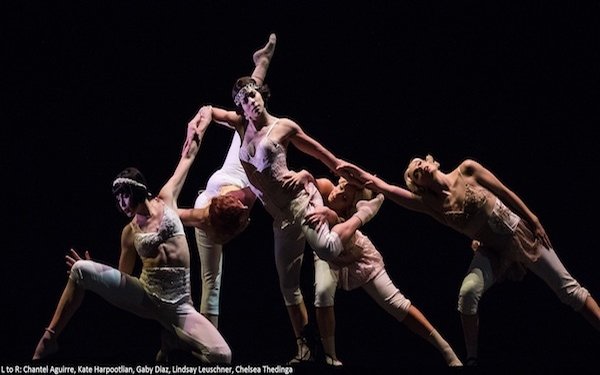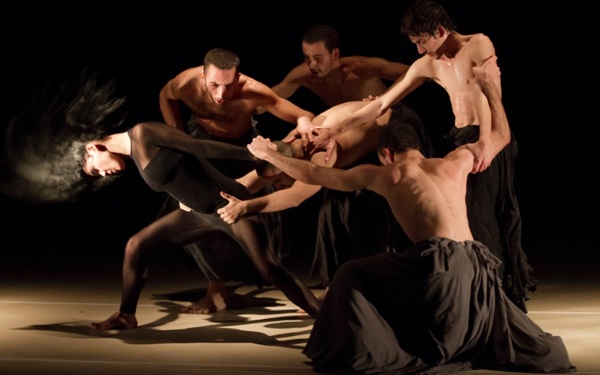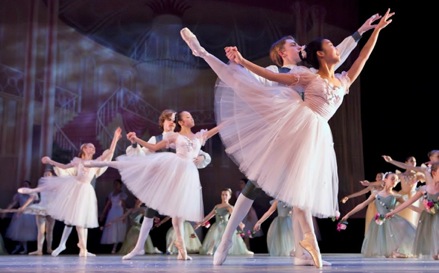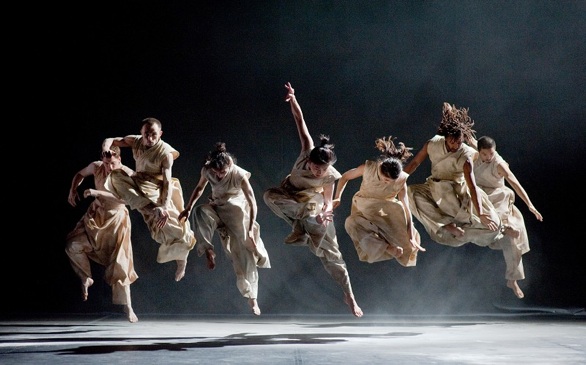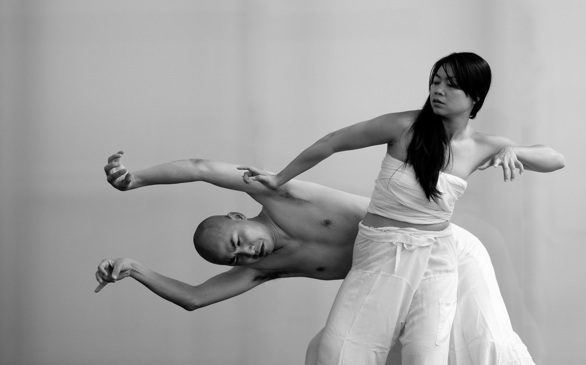This is not a Walt Disney fairytale, and that’s perfectly fine with me.
Director Matthew Bourne has done something incredible with Pyotr Ilyich Tchaikovsky’s ballet, "The Sleeping Beauty." Although there are some small similarities between Bourne and Disney’s re-telling of the fairytale favorite, there’s no mistake about it – Bourne’s “Sleeping Beauty, A Gothic Romance” is a darker, funnier and more passionate production than one could ever imagine.
The ballet starts off with a serious bang; clamoring thunder and sinister music plays as the audience views an outlined shadow of Carabosse (Maleficent in the Disney film) holding a baby. A screen with words then comes down on stage, and the classic story unfolds, beginning with “Once upon a time…” in the year 1890.
In this version of “Sleeping Beauty,” Carabosse (Adam Maskell) grants King Benedict and Queen Eleanor a daughter named Aurora. However, the King does not show his gratitude, so Carabosse casts an evil curse on the child. This is when the story becomes familiar: Carabosse’s curse is aimed to kill Aurora when she comes of age and pricks her finger on a rose’s thorn – not a spindle wheel, like in the movie. However, the king of the fairies re-directs Carabosse’s curse. Instead of dying, Aurora will just be asleep until true love’s kiss wakes her up.
The play flashes forward to 1911. Carabosse is dead, and her curse is thought to have died with her. Meanwhile, Aurora (Hannah Vasallo) is coming of age, and we’re introduced to Leo, her Prince Phillip so to speak. Their relationship is playful, yet burning with a little sexual attraction.
At Aurora’s coming-of-age party, the rebellious princess ignores "ladylike" standards, taking off her uncomfortable shoes and dancing around wildly barefoot. Then, an evil guest makes an appearance, introducing us to a brand new character in the fairytale: Caradoc (also portrayed by Maskell), Carabosse’s son.
The evil Caradoc manages to fulfill his mother’s curse, and Aurora endures 100 years of slumber. Now, Leo and Count Lilac (the king of the fairies) must figure out a way to awaken the sleeping princess. They do so 100 years later, in 2011.
With beautiful stage designs, skillful puppeteers and mesmerizing choreography, “Sleeping Beauty” is a feast for your eyes and emotions. What’s great about Bourne’s adaptation is you can interpret every symbol, every move.
For example, to me this ballet is about a young girl becoming a woman and discovering her sexuality. Leo tries to give Aurora a rose many times, but she playfully tosses it away or back to him. These roses, the very notion of being asleep and then woken up - "Sleeping Beauty" could be construed as a story about sexual awakening. I found myself wondering: Will Aurora ever be ready for love (or sex) by the time the curtains close for good?
Vasallo as Aurora does an incredible job dancing and acting. Yes, she can leap gracefully, and her arms are effortlessly elegant, but her beautiful facial expressions keep you focused on her the whole time. When she playfully teases Leo with a sly smirk on her face, the moment when her eyes project absolute horror as she pricks her finger and when Caradoc forcefully tugs her wrist and pulls away from her beloved Leo, Vasallo's expressions are 100 percent convincing. You see her distraught and confusion, and hear her heartbreaking whimpers.
Other dancers who stand out include the adorable Dominic North as Leo and Christopher Marney as Count Lilac. North has a natural comedic flare, and he and Marney make the prefect pair when dancing together. These two are the perfect examples of why boys need to continue taking up ballet.
Gothic romance combined with comedy, modernism and a few rather unconventional surprises (note to self: why would a fairy be named Count Lilac?), Bourne has definitely taken great liberties with one of Tchaikovsky's classics, and I'm glad he did. "Sleeping Beauty, A Gothic Romance” is a must-see this holiday season.


